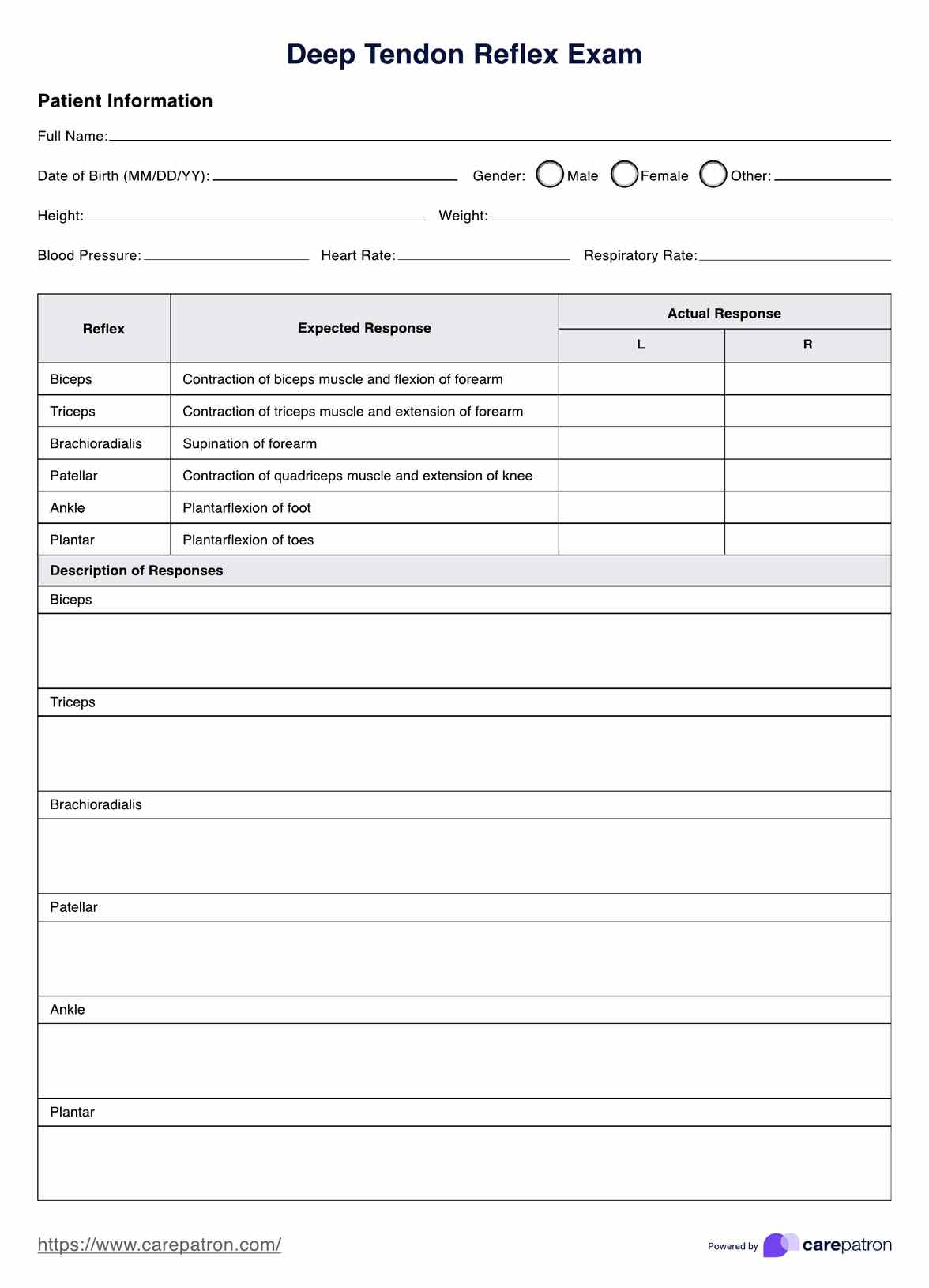A Reflex Exam is a neurological assessment that evaluates the body's automatic responses to specific stimuli, typically using a reflex hammer to tap tendons. This non-invasive test helps healthcare providers assess the functioning of the central and peripheral nervous systems by observing the speed and strength of reflex responses.

Reflex Exam
Looking for a comprehensive reflex exam guide? Check out our free Deep Tendon Reflex Exam worksheet and learn how to assess reflexes accurately.
Reflex Exam Template
Commonly asked questions
During a reflex test, doctors assess the strength, speed, and symmetry of the reflex responses to determine the integrity of the nervous system. They look for normal reflex reactions, which indicate healthy communication between the nerves and the spinal cord. Abnormal responses, such as diminished or absent reflexes, can suggest issues with the central or peripheral nervous systems, while brisk or hyperactive reflexes may indicate upper motor neuron lesions.
The four main types of reflexes include deep tendon reflexes, superficial reflexes, visceral reflexes, and pathologic reflexes. Deep tendon reflexes, such as the knee-jerk (patellar) and ankle-jerk (Achilles) reflexes, assess muscle stretch responses. Superficial reflexes, like the abdominal and plantar reflexes, involve responses to skin stimulation. Visceral reflexes pertain to internal organ responses, while pathologic reflexes, such as the Babinski reflex, indicate neurological dysfunction when present in adults.
EHR and practice management software
Get started for free
*No credit card required
Free
$0/usd
Unlimited clients
Telehealth
1GB of storage
Client portal text
Automated billing and online payments











